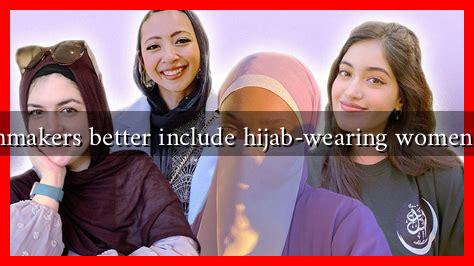-
Table of Contents
How Can Filmmakers Better Include Hijab-Wearing Women in Narratives?
In recent years, the representation of hijab-wearing women in film and television has gained increasing attention. As the global conversation around diversity and inclusion continues to evolve, filmmakers are presented with a unique opportunity to portray hijab-wearing women in authentic and empowering ways. This article explores how filmmakers can better include these women in narratives, ensuring that their stories are told with respect, depth, and nuance.
The Importance of Representation
Representation matters. It shapes perceptions, influences societal norms, and provides role models for marginalized communities. For hijab-wearing women, representation in film can help combat stereotypes and promote understanding. According to a study by the Geena Davis Institute on Gender in Media, films that feature diverse characters tend to perform better at the box office, indicating that audiences are eager for varied narratives.
Understanding Cultural Context
To authentically include hijab-wearing women in narratives, filmmakers must first understand the cultural and religious significance of the hijab. The hijab is not merely a piece of clothing; it represents a woman’s identity, beliefs, and personal choices. Here are some key points filmmakers should consider:
- Diversity of Experiences: Not all hijab-wearing women share the same experiences. Their backgrounds, reasons for wearing the hijab, and personal stories vary widely.
- Intersectionality: Hijab-wearing women come from diverse ethnic, cultural, and socio-economic backgrounds. Filmmakers should strive to represent this intersectionality in their narratives.
- Respectful Portrayal: Avoiding stereotypes and clichés is crucial. Filmmakers should focus on the individuality of characters rather than reducing them to their hijab.
Creating Authentic Characters
To create authentic hijab-wearing characters, filmmakers should engage with the communities they aim to represent. This can be achieved through:
- Consultation with Community Members: Involving hijab-wearing women in the writing and production process can provide valuable insights and ensure authenticity.
- Hiring Diverse Talent: Casting hijab-wearing actresses can bring genuine experiences to the screen, enhancing the character’s authenticity.
- Storytelling from Within: Encouraging hijab-wearing women to tell their own stories can lead to more nuanced and relatable narratives.
Case Studies of Successful Representation
Several films and television shows have successfully included hijab-wearing women in their narratives, serving as excellent examples for future projects:
- “Ramy” (2019): This Hulu series features a Muslim-American protagonist navigating life, love, and faith. The show includes hijab-wearing women in various roles, showcasing their complexities and individuality.
- “The Big Sick” (2017): This romantic comedy features a hijab-wearing character who is portrayed as a supportive and multi-dimensional figure, breaking away from traditional stereotypes.
- “Ms. Marvel” (2021): This Marvel series introduces Kamala Khan, a Pakistani-American superhero who wears a hijab. The show highlights her cultural background and the challenges she faces, providing a fresh perspective on hijab-wearing women.
Challenges and Opportunities
Despite the progress made, challenges remain in the representation of hijab-wearing women in film. These include:
- Industry Bias: Many filmmakers may still hold biases that prevent them from fully embracing diverse narratives.
- Limited Funding: Projects focusing on underrepresented communities often struggle to secure funding, limiting their production.
- Audience Perception: Some audiences may resist narratives that challenge their preconceived notions about hijab-wearing women.
However, these challenges also present opportunities for filmmakers to innovate and create compelling stories that resonate with a broader audience.
Conclusion
Inclusion of hijab-wearing women in film narratives is not just a matter of representation; it is about telling authentic stories that reflect the diversity of human experiences. By understanding cultural contexts, creating authentic characters, and learning from successful case studies, filmmakers can contribute to a more inclusive and nuanced portrayal of hijab-wearing women. As the industry continues to evolve, it is essential for filmmakers to embrace these narratives, fostering understanding and empathy among audiences worldwide.
For more insights on representation in media, you can visit the Geena Davis Institute on Gender in Media.


